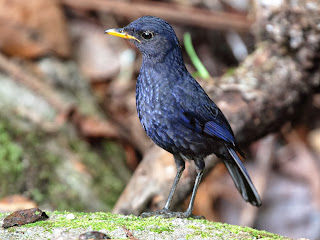 Likely not Red Turtledoves, the Red Turtledoves should be much redder in
tone, these are likely the Barbary Doves (either originated from Eurasian
Collared Dove or African Collared Dove, its still under debate but African
seemed to be the more favored choice for the time being, the Barbary Dove,
which is completely domesticated is usually regarded as a distinct species, or
a subspecies of the African/European).
Likely not Red Turtledoves, the Red Turtledoves should be much redder in
tone, these are likely the Barbary Doves (either originated from Eurasian
Collared Dove or African Collared Dove, its still under debate but African
seemed to be the more favored choice for the time being, the Barbary Dove,
which is completely domesticated is usually regarded as a distinct species, or
a subspecies of the African/European).This is a common cage bird, it is also often wrongly called the Javanese Turtledove which is in fact another species! I have seen this species as an escapee as well once opposite my house.
The real Red Turtledove has a grey head and very reddish body. Red turtle dove is essentially a plains species, extending to Taiwan and the Philippines but uncommon on the Malaysian archipelago. In Malaysia it is a feral species that make it their home. Probably brought over by the Indians migrants a long time ago. It is the commonest dove throughout the Punjab region. It is a summer migrant visitor to Pakistan and the Republic of India where it is more or less resident.
They prefer open drier country,cultivation plantation and shrubs areas better-wooded tracts such as canal or roadside tree plantations regions. My doves photos are taken in captivity in the state of Kedah opposite my in-laws place. There is even a white one

























